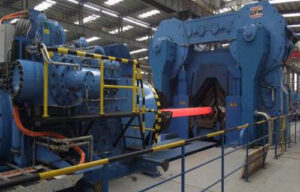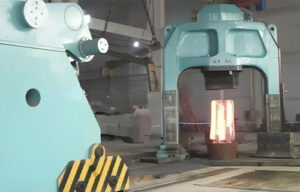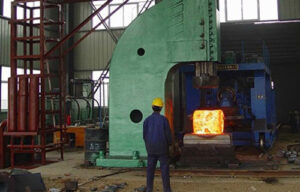Welcome to My Blog!
Before we dive into the content, I’d love for you to join me on my social media platforms where I share more insights, engage with the community, and post updates. Here’s how you can connect with me:
Facebook:https://www.facebook.com/profile.php?id=100090797846538
Now, let’s get started on our journey together. I hope you find the content here insightful, engaging, and valuable.
Table of Contents
Introduction

Steel sheets are widely used across various industries, including construction, manufacturing, and automotive sectors. Understanding steel sheet weight calculations is essential for accurate material selection, cost estimation, and transportation planning. This article explores the critical factors involved in these calculations and how they impact different applications.
Understanding Steel Sheet Weight Calculations
Steel sheet weight refers to the mass of a steel sheet per unit area. It is determined by the sheet’s dimensions, thickness, and the density of the steel. Accurate calculations help in ensuring structural safety, material optimization, and logistics efficiency.
Importance of Calculating Steel Sheet Weight
Calculating steel plate weight provides insights into transportation limits, helps in budgeting for material costs, and ensures compatibility with design requirements. It also aids in avoiding wastage by matching the right steel sheet specifications to project needs.
Formula for Steel Sheet Weight Calculation
The weight of a steel sheet can be calculated using the formula:
Weight (kg)=Length (m)×Width (m)×Thickness (m)×Density (kg/m3)\text{Weight (kg)} = \text{Length (m)} \times \text{Width (m)} \times \text{Thickness (m)} \times \text{Density (kg/m}^3\text{)}Weight (kg)=Length (m)×Width (m)×Thickness (m)×Density (kg/m3)
For example, a steel sheet with dimensions 2 meters by 1 meter and a thickness of 0.005 meters would have the following weight:
2×1×0.005×7850=78.5 kg2 \times 1 \times 0.005 \times 7850 = 78.5 \, \text{kg}2×1×0.005×7850=78.5kg
This formula is versatile and can be applied to sheets of varying sizes and thicknesses.
Factors Affecting Steel Plate Weight

Several factors influence the accurate calculation of steel sheet weight.
Material Density
Different types of steel, such as carbon steel or stainless steel, have varying densities, which directly impact the weight. It is crucial to use the correct density value for precise calculations.
Thickness of the Sheet
Thickness is a primary determinant of steel sheet weight. Small changes in thickness can result in significant differences in weight, affecting project requirements and costs.
Surface Coatings
Coatings such as galvanization or painting add to the total weight of the steel sheet. Ensure that these additions are factored into the calculations.
Steel Plate Weight Reference Table
Below is a reference table showcasing common steel sheet dimensions, thicknesses, and corresponding weights:
| Dimensions (m) | Thickness (m) | Density (kg/m³) | Weight (kg) |
|---|---|---|---|
| 2 x 1 | 0.005 | 7850 | 78.5 |
| 2 x 1 | 0.010 | 7850 | 157 |
| 2 x 1 | 0.015 | 7850 | 235.5 |
| 2.5 x 1.2 | 0.005 | 7850 | 117.75 |
| 2.5 x 1.2 | 0.010 | 7850 | 235.5 |
This table provides quick estimates for steel sheet weight based on standard sizes and thicknesses.
Applications of Steel Plate Weight Calculations

Understanding steel sheet weight calculations is vital in various applications, ensuring precision and efficiency.
Construction Projects
In construction, accurate weight calculations help in structural stability analysis, material selection, and cost estimation.
Manufacturing Processes
Manufacturers rely on precise weight data to optimize the production process, minimize material waste, and maintain product consistency.
Transportation and Logistics
Knowing the exact weight of steel sheets ensures efficient loading, prevents vehicle overloading, and reduces transportation risks.
Common Challenges in Calculating Steel Plate Weight
While calculating steel sheet weight, common challenges include ignoring the impact of surface coatings, using incorrect density values, and rounding off measurements too early. Addressing these issues ensures more accurate results.
Conclusion

Calculating steel sheet weight is a critical skill for professionals across multiple industries. From selecting the right material to ensuring safe transportation and precise cost estimation, these calculations play a vital role in project success. By understanding the factors involved and using reliable formulas, you can make informed decisions that enhance efficiency and reduce waste.
FAQ
What is the typical density value used for steel sheet weight calculations?
The standard density for most steel sheets is 7850 kg/m³. However, this value can vary based on the type of steel being used.
How do coatings impact steel sheet weight?
Coatings such as galvanization or painting add extra weight to the steel sheet. It is important to include this additional weight in your calculations.
Can I use a single formula for all steel types?
Yes, the formula remains the same, but you must adjust the density value according to the specific type of steel you are calculating.
Why is accurate steel sheet weight calculation important?
Accurate calculations ensure proper project planning, reduce costs, prevent overloading during transportation, and help in selecting suitable materials.
Where can I find additional resources on steel sheet weight?
You can consult industry standards, manufacturer specifications, or use online calculators for more detailed information.

